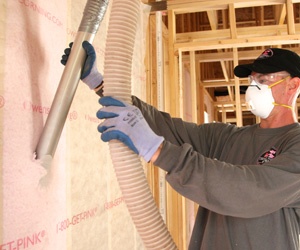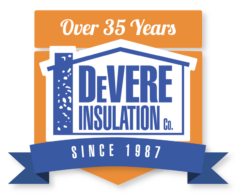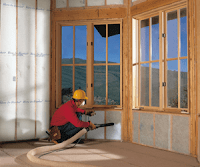
When most people think of insulation, the first thing that comes to mind is fiberglass insulation. Fiberglass insulation is the most widely used type of insulation, used to insulate attics, walls, and more in new construction and existing homes. There are many ways fiberglass insulation can be installed today that makes this legacy insulator more effective than ever before and may give you a new perspective on this product:
- Fiberglass with Air Sealing – While fiberglass is a cost-effective insulator, its woven fibers do not inherently prevent air from escaping through penetration points throughout a structure. Combining fiberglass insulation with air sealing prevents air infiltration and loss of conditioned inside air. ENERGY STAR states sealing air leaks and insulating can save a homeowner on their energy bills.
- Blown-in Wall System – In new home construction, many contractors choose to install fiberglass batt insulation in wall cavities. The blown-in wall system takes wall insulation a step further. With this system, loose-fill fiberglass insulation is densely packed into the wall cavity behind a layer of plastic. This fully fills the wall cavity and reduces air gaps that naturally occur around batts. Many contractors take this system one step further by air sealing the wall cavity before installing insulation to increase energy efficiency even more.
- Flash and Batt – The flash and batt system combine the best fiberglass insulation and spray foam insulation in one application. A flash and batt system (also known as a hybrid system) combines spray foam’s air sealing properties and the insulating benefits of fiberglass at a lower price point than installing full spray foam. During installation, one inch of closed-cell spray foam insulation is applied. Once in place, a fiberglass batt is placed over the top of the foam. This is a great option to achieve high performance at a budget-friendly price.
Fiberglass insulation provides many cost-effective insulation options for today’s builders and homeowners. Contact our office to learn more about these options and schedule a free estimate.

